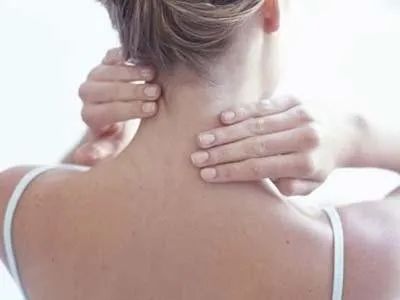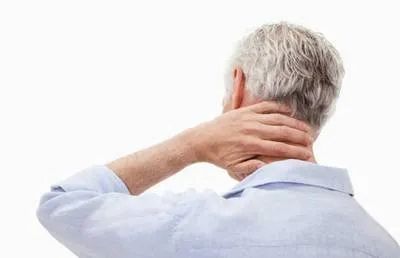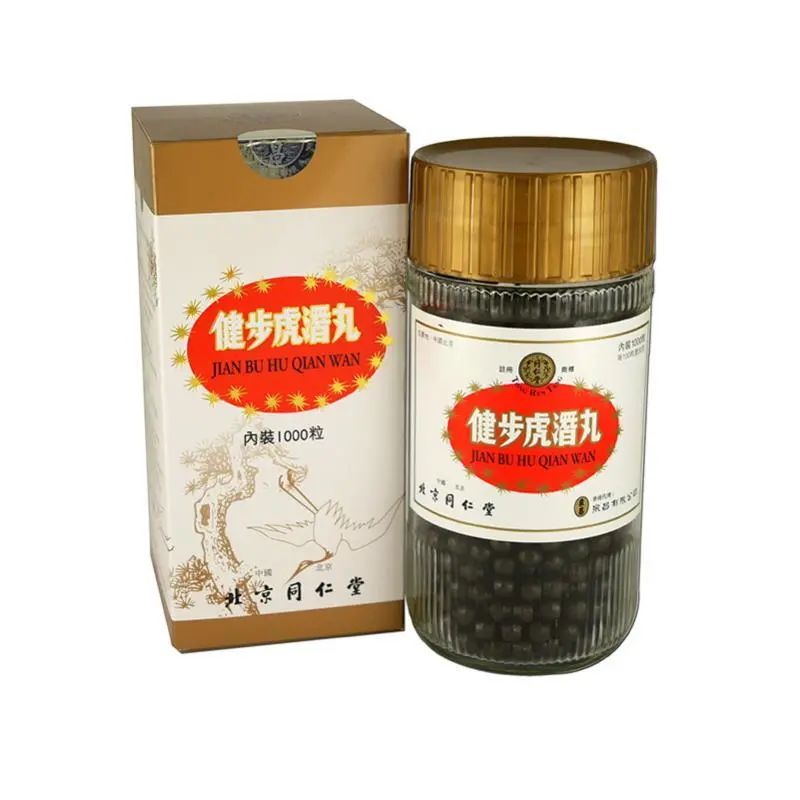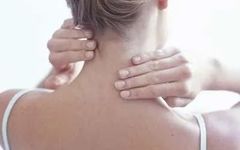Daily Learning of Traditional Chinese Medicine – Cervical Spondylosis

Cervical spondylosis refers to a complex syndrome characterized by degeneration of the cervical intervertebral discs and secondary changes that stimulate or compress adjacent tissues, leading to various symptoms and signs. It is also known as cervical syndrome.
Cervical spondylosis is often due to frequent daily activities of the neck, leading to wear and tear after middle age, including changes such as cervical osteophyte formation, calcification of cervical ligaments, and degeneration of cervical intervertebral discs. When these degenerative changes affect the cervical nerve roots, spinal cord, or major cervical blood vessels, a series of symptoms arise, collectively referred to as cervical spondylosis or cervical syndrome. It can be caused by congenital deformities, cervical fissures, vertebral fusion, cervical rib canal stenosis, as well as acquired factors such as liver and kidney deficiency, degeneration of tendons and bones, acute cervical trauma, chronic strain, invasion of wind, cold, and dampness, and local swelling and sores, leading to intervertebral disc degeneration, changes in small joints, ligament alterations, and bone hyperplasia, resulting in a series of pathological changes. The etiology and pathological process of this disease are complex, thus its effects on the body are diverse, including neck and back pain, inability to flex or extend, and rotation; some may experience unilateral shoulder and arm pain, numbness, or muscle atrophy, and even long-term liver and kidney deficiency, weakness of tendons and bones, cold limbs, and muscle atrophy; if combined with qi and blood deficiency, empty meridians, and lack of nourishment to tendons and bones, it can lead to severe paralysis. Other related manifestations may also occur. The prognosis varies depending on the type of syndrome. The general treatment principle is to differentiate and treat based on syndrome types, combined with manual therapy, traction, fixation, acupuncture, and other comprehensive treatments.

(1) Key Points of Inquiry
Cervical spondylosis refers to a complex syndrome characterized by degeneration of the cervical intervertebral discs and secondary changes that stimulate or compress adjacent tissues, leading to various symptoms and signs, also known as cervical syndrome. Clinically, it is often differentiated from conditions such as stiff neck, shoulder periarthritis, cervical ribs, cervical tuberculosis, hypertension, and Ménière’s disease. Diagnosis is primarily made through X-ray examination and clinical history.
This disease is a complex syndrome, generally classified into cervical type, nerve root type, spinal cord type, vertebral artery type, sympathetic type, and mixed type based on different clinical manifestations.


(2) Classification Inquiry
1. Cervical Type Cervical Spondylosis
Inquiry: Young adults, with factors such as overwork, cold stimulation, or improper posture, experience soreness or stabbing pain in the neck and shoulder area, often accompanied by a feeling of stiffness in the neck, with pain worsening during neck movements, deep and diffuse pain radiating to the neck and occiput. Combined with X-ray imaging, physiological curvature changes show mild step-like alterations.
Treatment: Use spinal manipulation techniques to relax muscles and relieve spasms. Topical applications of cold pain relief ointment and musk tiger bone plaster. Internally, the treatment principle is to relax tendons and activate collaterals, dispel wind, and relieve pain. The formula used is modified Shu Jin Decoction.
Shu Jin Decoction: Qiang Huo (Notopterygium) 9g, Dang Gui (Angelica) 15g, Jiang Huang (Turmeric) 9g (wine-fried), Zhi Gan Cao (Honey-fried Licorice) 6g, Bai Zhu (White Atractylodes) 9g (fried), Hai Feng Teng (Uncaria) 9g, Chi Shao (Red Peony) 9g (wine-fried), Sheng Jiang (Fresh Ginger) 3 slices.
2. Nerve Root Type Cervical Spondylosis
Inquiry: Occurs in middle-aged and elderly individuals, presenting with soreness, stabbing pain, or knife-like pain in the neck, shoulder, and back, which may radiate from the neck to the shoulder, arm, forearm, and even fingers in an electric shock-like manner. Pain is related to neck posture and movements, with activities such as excessive flexion, extension, or rotation often triggering or exacerbating pain. Most patients experience heaviness, weakness, numbness, or a crawling sensation in one arm, which may also occur bilaterally. Some may experience partial muscle weakness and atrophy in the upper limbs.
Treatment: Massage therapy often employs techniques such as muscle relaxation, acupressure, targeted rotation, and arm shaking. Internally, the treatment principle is to nourish blood, invigorate circulation, and tonify qi. The formula used is modified Huang Qi Gui Zhi Wu Wu Decoction. If pain is severe, wind and cold should be dispelled, and tendons and collaterals should be relaxed. The formula used is modified Gui Zhi Fu Zi Decoction.
Huang Qi Gui Zhi Wu Wu Decoction: Ingredients: Huang Qi (Astragalus) 15g, Gui Zhi (Cinnamon Twig) 12g, Shao Yao (Peony) 12g, Sheng Jiang (Fresh Ginger) 25g, Da Zao (Jujube) 4 pieces.
Usage: Decoction in water, divided into three doses (common adult dosage: 3 doses).
3. Spinal Cord Type Cervical Spondylosis
Inquiry: Commonly seen in middle-aged and elderly individuals, presenting with weakness in both lower limbs, tightness, heavy steps, clumsiness in walking, inability to lift the toes off the ground, and even falling or kneeling due to instability. Both upper limbs may feel heavy and weak, with clumsy movements and cold hands. Some patients may experience a feeling of constriction in the chest and abdomen, and a few may have urgency in urination or difficulty in urination and defecation. The majority of patients experience reduced pain and temperature sensation, but the planes of sensation and actual sensation are dissociated.
Treatment: After a clear diagnosis, early surgical intervention should be sought. Traditional Chinese medicine treatment should focus on nourishing the liver and kidneys, strengthening tendons and bones. The formulas used are Qiang Jin Zhuang Gu Decoction and Bu Yang Huan Wu Decoction. Commonly used patent medicines include Jian Bu Hu Qian Wan and Jian Shen Quan Lu Wan.

4. Sympathetic Type Cervical Spondylosis
Inquiry: The neck primarily experiences dull, oppressive, or aching pain, often deep and vague. Symptoms may include headaches, occipital pain, dizziness, dry eyes, enlarged palpebral fissures, blurred vision, and pain in the eye sockets. Long-term stimulation of the sympathetic nerves may also lead to peripheral vascular symptoms such as coldness, numbness, cyanosis, and edema in the limbs; some patients may experience unilateral facial sweating or excessive sweating. Some may present with cervical angina, arrhythmia, or elevated blood pressure.
Treatment: Relax tendons and activate collaterals, dispel wind, and relieve pain. The formula used is modified Shu Jin Decoction. For those with liver and kidney deficiency, it is necessary to tonify the liver and kidneys, strengthen tendons and bones, commonly using Bu Shen Zhuang Jin Wan. Stellate ganglion block and symptomatic manual therapy may also be performed.
Modified Shu Jin Decoction: Qiang Huo (Notopterygium) 10g, Dang Gui (Angelica) 15g, Bai Shao (White Peony) 15g, Jiao Zhu (Fried Atractylodes) 10g, Jiang Huang (Turmeric) 9g, Hai Tong Pi (Erythrina) 15g, Lu Jiao (Deer Antler) 15g, Sang Ji Sheng (Mulberry Mistletoe) 15g, Gan Cao (Licorice) 3g. One dose daily, decocted twice and mixed.
5. Vertebral Artery Type Cervical Spondylosis
Inquiry: Pain in the neck and shoulder area and dizziness are the main symptoms of this condition, varying in intensity and often related to neck rotation activities. Symptoms may also include diplopia, blurred vision, myopia, and forgetfulness. Many patients report migraines or sudden falls, often triggered by turning the head in a specific position. Vertebral artery angiography can confirm the diagnosis.
Treatment: Patients with obesity often suffer from phlegm and dampness, treated by resolving phlegm and promoting diuresis, relaxing tendons and activating collaterals. The formula used is modified Wen Dan Decoction. If the patient is weak, with palpitations and shortness of breath, the treatment should focus on tonifying qi and nourishing blood, relaxing tendons and activating collaterals. The formula used is modified Gui Pi Decoction.
Wen Dan Decoction: Ban Xia (Pinellia) (washed seven times), Zhu Ru (Bamboo Shavings), Zhi Shi (Bitter Orange) (stir-fried, pith removed) each 60g, Chen Pi (Dried Tangerine Peel) 90g, Gan Cao (Honey-fried Licorice) 30g, Fu Ling (Poria) 45g.
Usage: Grind into powder. Each dose 12g, with 1.5 cups of water, add five slices of ginger and one jujube, decoct until 70% done, strain, and take before meals. Modern usage: Add five slices of ginger and one jujube, decoct, and adjust the dosage according to the original formula ratio.
6. Mixed Type Cervical Spondylosis
Inquiry: Symptoms are complex, with manifestations of all the above types. Detailed inquiry and examination should be conducted to understand the degree of predominance of each type.
Treatment: Based on the predominance of each type, treatment should be differentiated and comprehensive treatment should be conducted.
Chain Store Demand Points:
The reputation and repeat consumption of consumers depend on professionalism.
With the improvement of the material living standards and health awareness of the public, more consumers’ consumption behavior tends to be rational;
In today’s environment where membership systems, promotional methods, and price wars among chain stores show no significant differentiation, winning customers ultimately depends on the professional service level of sales personnel.
Increasing customer repeat consumption rates is essential to learn.
The Pharmacy Red Book is dedicated to enhancing the professionalism of pharmacy staff.

The Pharmacy Red Book
Focusing on the growth of store elites
Long press the QR code to follow

